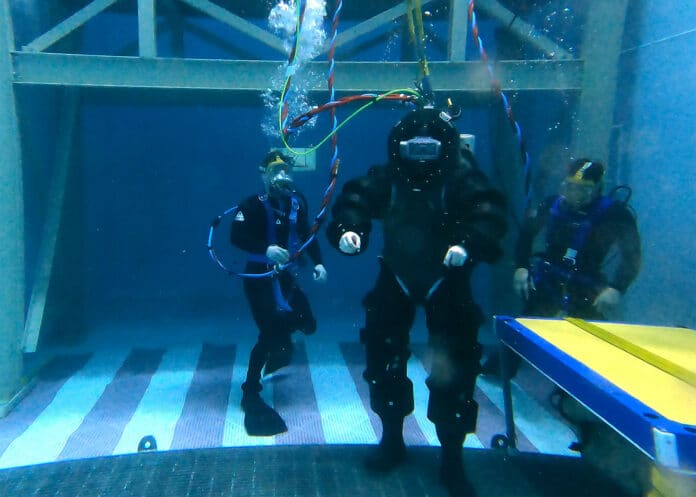More than eighty percent of the ocean is unexplored. The deeper divers dive, the danger from increasing water pressure is greater. The pressures at ocean depths are about 40 to over 110 times the pressure of Earth’s atmosphere.
Navy divers use a saturation system or diving bell pressurized with gas in deep water conditions. Hence, the pressure inside the bell matches the outside pressure.
However, this system has some disadvantages, such as, when returning to the surface, divers must come upwards slowly and stop at intervals so they don’t suffer decompression sickness. This is a potentially fatal condition in which inert gas dissolved in the blood and tissues at high-pressure forms bubbles as the pressure decreases. Although the time-consuming ascent protects divers, it limits their hours at a site.
To overcome these problems Office of Naval Research has designed a special diving suit to protect against the crushing pressure of ocean depths called Deep Sea Expeditionary with No Decompression (DSEND).
DSEND’s suit has a self-contained life support system that encloses a diver in stabilized pressure protection during the entire dive. With a DSEND diving suit, a diver can work at depth for several hours and ascend without a long decompression process.
DSEND suit is made from hard and durable materials. Yet, it is lightweight, enabling divers to swim and walk on the bottom easily. The atmospheric dive suit also features rotating, detachable joints for greater agility, flexibility, and maneuverability.
The suit is also easy to put on and take off; it can be adjusted to diver sizes. In addition, DSEND features joints, grippers, and hand attachments made from novel and strong materials, is lightweight, and mirrors the natural movements of human joints, reducing diver fatigue.
“Because DSEND maintains one consistent pressure atmosphere, the diver is never exposed to the negative physiological effects associated with deep diving, such as decompression sickness, cold and wet exposure,” said Paul McMurtrie, NAVSEA diving systems program manager. “A diver can work for long periods of time in deep water and rapidly return to the surface.”
“DSEND is truly a game-changer because it’s a self-contained environment that keeps internal pressure steady as a diver descends to depths with increasing external pressure,” said Dr. Sandra Chapman, a program officer in ONR’s Warfighter Performance Department. “It increases diver safety, allows them to expand the operational envelope, and would eliminate lengthy decompression times.”
The system is very beneficial for Navy divers. DSEND system would eliminate the need for safety-enhancing decompression, and a more flexible arm attachment would allow for more effective target recovery. Navy diving missions include deep ocean salvage of ships and aircraft, underwater salvage, disposal of explosive ordnance, maintenance of ship hulls, and recovery of sunken equipment.
The Deep Sea Expeditionary with No Decompression (DSEND) suite is sponsored by the Office of Naval Research (ONR) in partnership with the Naval Sea Systems Command (NAVSEA), the Naval Undersea Warfare Center (NUWC), and the Naval Surface Warfare Center (NSWC) Panama City.
DSEND conducted demonstrations at NSWC Carderock Division in Maryland and the Navy Experimental Diving Unit in Florida. During this demonstration, DSEND divers completed various exercises.
The DSEND diving suit has the potential to be very advantageous to Navy divers. That will help to recover targets and do their job more effectively and safely.
